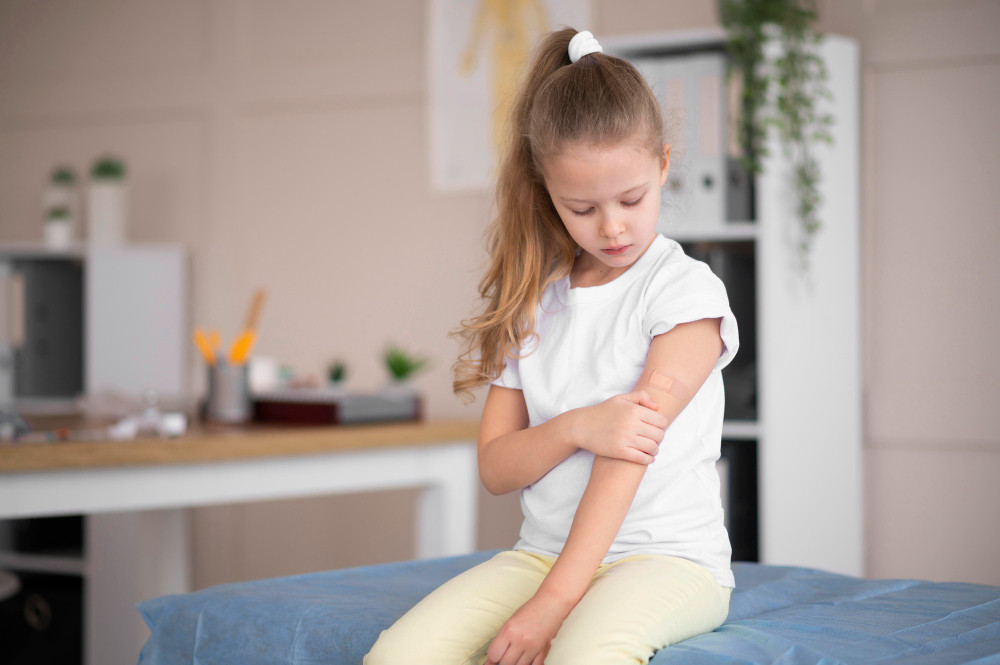As the sun soars high and temperatures rise, parents often eagerly await the laughter of children playing outside. But the sun’s warmth also brings certain challenges, one of which is the ever-prevalent heat rash. This condition is especially common in children and can cause discomfort and concern. But what exactly is heat rash? And how can parents effectively manage and prevent it in their little ones? Understanding the causes, symptoms, and treatments of heat rash in kids ensures that the only thing you’ll have to worry about during summer is running out of sunscreen.
What Does Heat Rash Mean in Kids?
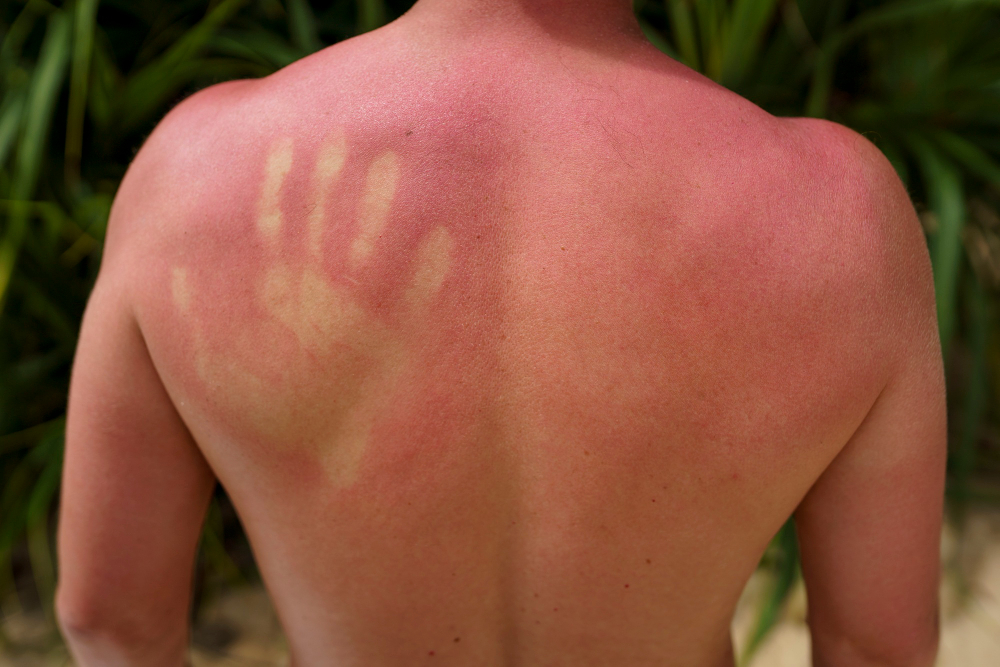
Heat rash, or prickly heat or miliaria, is a common skin condition in children, especially during hot and humid weather. It appears as small red spots or blisters, often causing discomfort, itching, and a prickly sensation. This rash occurs when sweat ducts become blocked, and sweat cannot evaporate, leading to inflammation.
What are the Types of Heat Rash?
Heat rash, an all-too-common ailment, especially in warm, humid conditions, manifests in various forms. It’s essential to understand these types to ensure proper care and treatment. Here’s a detailed breakdown of the different types of heat rash:
1. Miliaria Crystallina
This is the skin’s gentle whisper, signaling the onset of heat rash. It is the mildest form, and when observed closely, the skin seems to be adorned with tiny clear blisters or bumps, reminiscent of morning dewdrops on a leaf. These fluid-filled vesicles don’t typically cause discomfort, but they are a telltale sign that the sweat ducts are getting blocked.
2. Miliaria Rubra
Commonly referred to as ‘prickly heat’, this type is a more vocal protest from the skin. As the name suggests, this rash is characterized by its fiery red and inflamed bumps. The itching can be incessant, accompanied by a stinging or prickly sensation, making children particularly restless. This discomfort arises primarily because the sweat gets trapped under the skin, unable to find an escape route.
3. Miliaria Pustulosa
Taking things up a notch, this form is when the skin sounds an alarm. The once-tiny blisters evolve, becoming inflamed and may even fill with pus. This gives the skin an aggravated appearance, and the sensation is just as uncomfortable. It’s crucial to be cautious here, as there’s a heightened risk of infection if these pustules break open.
4. Miliaria Profunda
Rare yet the most concerning of the lot, this type emerges as larger, flesh-colored bumps lurking deeper within the skin’s layers. Often resulting from recurrent episodes of untreated or improperly treated heat rashes, these bumps signify that sweat is trapped deeper below the skin’s surface. The discomfort can be profound, and seeking medical attention is imperative if one suspects this form of heat rash.
What Causes of Heat Rash in Toddlers?
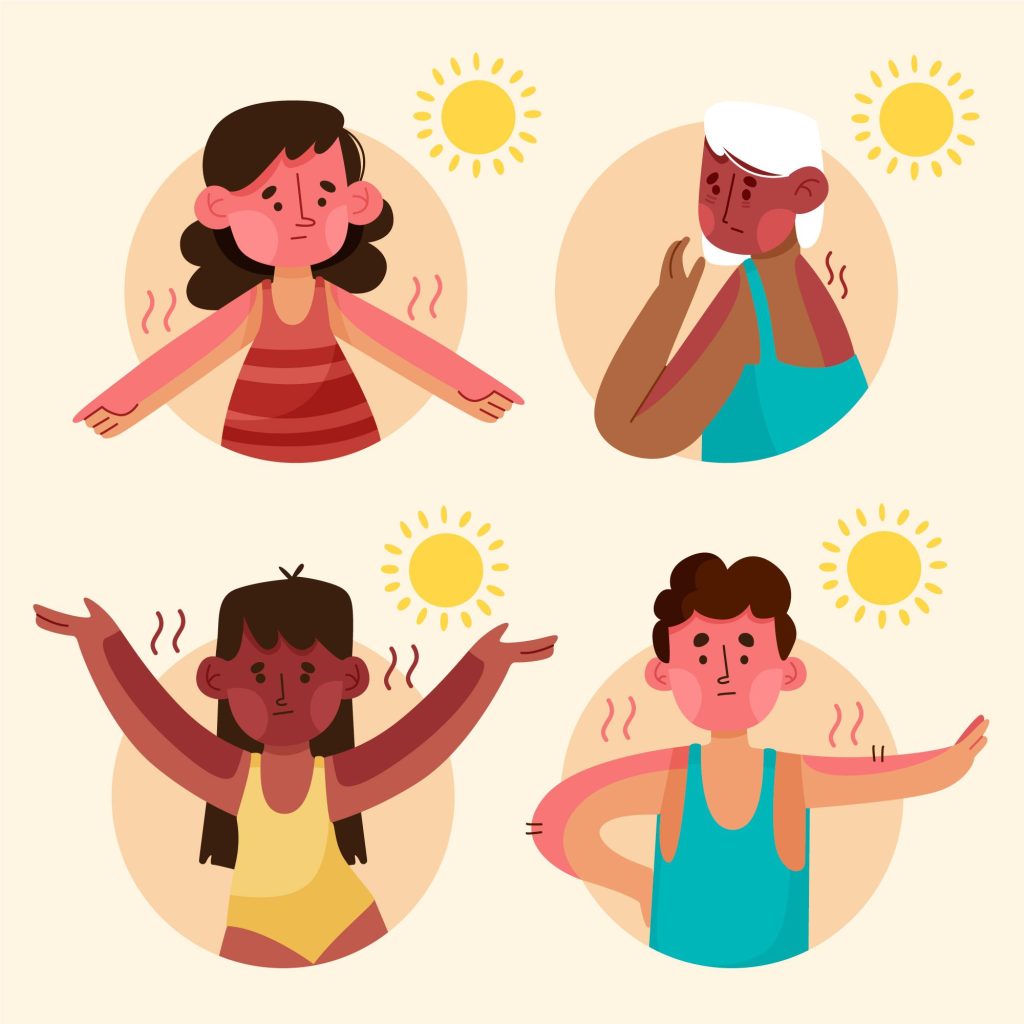
Imagine a hot summer day when your skin feels sticky with sweat. For kids, especially those with sensitive skin, certain conditions cause their sweat ducts to get clogged, preventing sweat from escaping. It’s like a traffic jam underneath the skin, leading to inflammation and the appearance of those characteristic rashes. Over-bundling them in clothes, intense playtime activities causing heavy sweating, some lotions or oils acting as barriers, or simply overheating when bedridden can all be the cause. Factors that contribute to this include:
- Overdressing the child in warm, humid weather: Layering a child in too many clothes prevents the skin from breathing properly, leading to trapped sweat.
- Intense physical activity leading to excessive sweating: Activities that cause a child to sweat profusely can result in clogged sweat ducts if the sweat doesn’t evaporate quickly.
- Certain lotions or oils that block sweat ducts: Thick creams, ointments, or oils can create a barrier on the skin, preventing sweat from evaporating and leading to clogged ducts.
- Overheating, for example, if a child is bedridden: Lying in one position for prolonged periods, especially in a warm environment, can lead to sweat accumulation and blockage.
- High-humidity environments: Places with high humidity can prevent sweat from evaporating, leading to heat rash.
- Tight-fitting clothing: Too tight clothes can cause friction and trap sweat, aggravating the skin.
- Heavy blankets or bedding: can trap heat, especially during warmer nights, causing overheating while sleeping.
- Newborns in incubators: Premature babies or those needing to be in incubators can develop heat rash if the environment gets too warm.
- Fever or illness: When a child has a fever, the increased body temperature and sweating can lead to heat rash.
- Genetics: Some children might be more predisposed to developing heat rashes due to hereditary factors.
What are the Signs and Symptoms of Heat Rash?
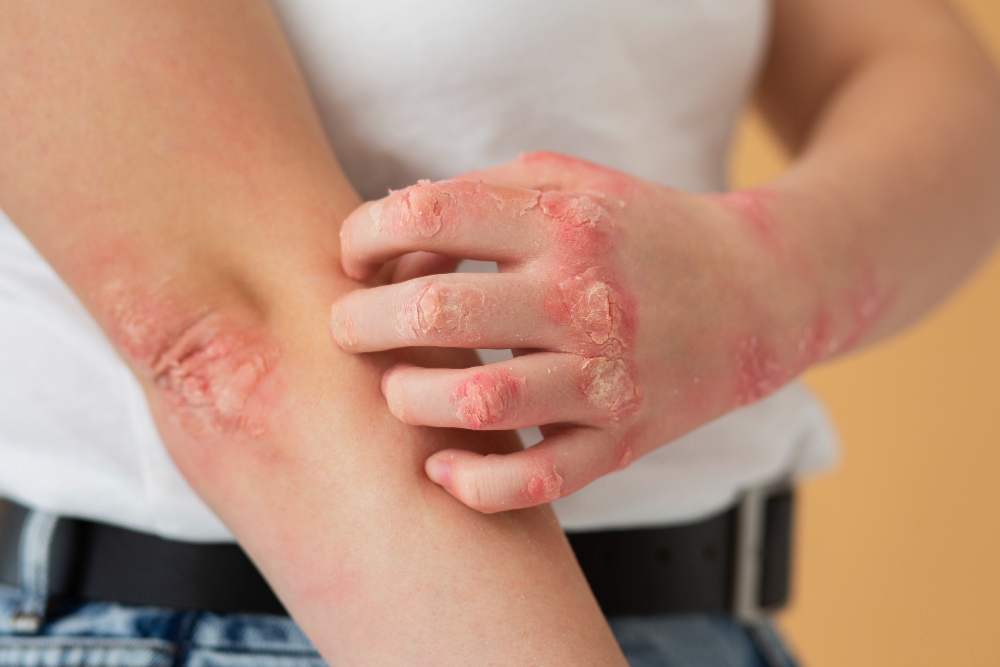
If you see red or pinkish bumps on a child’s skin, especially on the neck, shoulders, chest, or in the folds of their elbows and armpits, it’s a clear sign of heat rash. These areas might feel warm, accompanied by an evident itchiness or prickly feeling. The blisters, filled with clear fluid, can give the skin a glossy appearance in certain lights. The signs and symptoms of heat rash vary depending on its type but generally include:
- Red or pink bumps on the skin: These small, raised lesions are a hallmark sign of heat rash.
- Clear fluid-filled blisters: If not cared for properly, these vesicles can burst upon friction, leading to possible secondary infections.
- Itchiness or a prickly sensation: Often described as “stinging” or “burning”, this sensation can cause great discomfort.
- Areas of the skin may feel warm to the touch: This is a direct result of the inflammation and trapped heat in the affected areas.
- Discomfort in the affected areas: Itchiness, warmth, and bumps can make the affected areas particularly uncomfortable.
- Swelling or inflammation in the affected areas: Some children might exhibit more pronounced swelling in the rash regions.
- Localized pain: While not as common, some children might experience pain in the affected areas, especially if the rash is inflamed or there’s a secondary bacterial infection.
- Darkening of the skin: Over time and with recurrent episodes, some areas where the heat rash occurs frequently might experience mild skin discoloration.
- Tenderness when touched: The affected areas might be sensitive to touch due to inflammation.
- Appearance of rash in skin folds: This includes the crooks of elbows, behind the knees, underarms, and groin, as these areas are more prone to sweating and less exposed to air.
How to Prevent Heat Rash in Kids?

Prevention is always better than cure. Imagine dressing a child in breathable cotton outfits during a hot day, ensuring the sweat evaporates easily. The child’s sleeping space should have a gentle breeze, ensuring they don’t overheat during naps. Bath times with mild soap help clear away sweat or oil buildup, and sipping on cool water throughout the day helps them maintain a balanced body temperature. To prevent heat rash in kids:
- Dress them in lightweight and loose-fitting clothing during hot weather: Breathable fabrics like cotton can help sweat evaporate more quickly, reducing the risk of clogged sweat ducts.
- Avoid heavy creams or ointments that might block sweat ducts. Instead, opt for water-based moisturizers or those specifically designed for sensitive skin.
- Ensure the child’s sleeping area is well-ventilated. Fans or opening windows can help, but ensure the child isn’t directly under the airflow, which could lead to colds.
- Give the child frequent baths with mild soap to remove sweat and oils: This keeps the skin clean and relieves the heat.
- Keep the child hydrated to maintain a balanced body temperature: Drinking water or electrolyte solutions can help the body regulate its temperature.
- Limit time spent outdoors during peak sun hours: If possible, avoid letting kids play outside when the sun is hot, typically between 10 a.m. and 4 p.m.
- Use lightweight bedding: Opt for sheets and blankets made of breathable materials. This helps to prevent overheating during sleep.
- Teach children to recognize the signs: As they grow, kids can be educated on the early signs of heat rash, so they can take steps or notify an adult when they feel one developing.
- Reduce physical activity during particularly hot or humid days: If physical activity is necessary for the child, ensure frequent breaks in a shaded or cool area.
- Ensure frequent changes of clothes: If clothes become sweaty, it’s a good idea to change the child into a fresh set to prevent prolonged contact with moisture.
- Avoid synthetic fabrics: Materials like polyester can trap heat and moisture against the skin. Natural fibers, like cotton, are more breathable.
These preventive measures can significantly reduce the chances of a child developing heat rash, allowing them to enjoy warmer days with minimal discomfort.
Treatment of Heat Rash in Toddlers
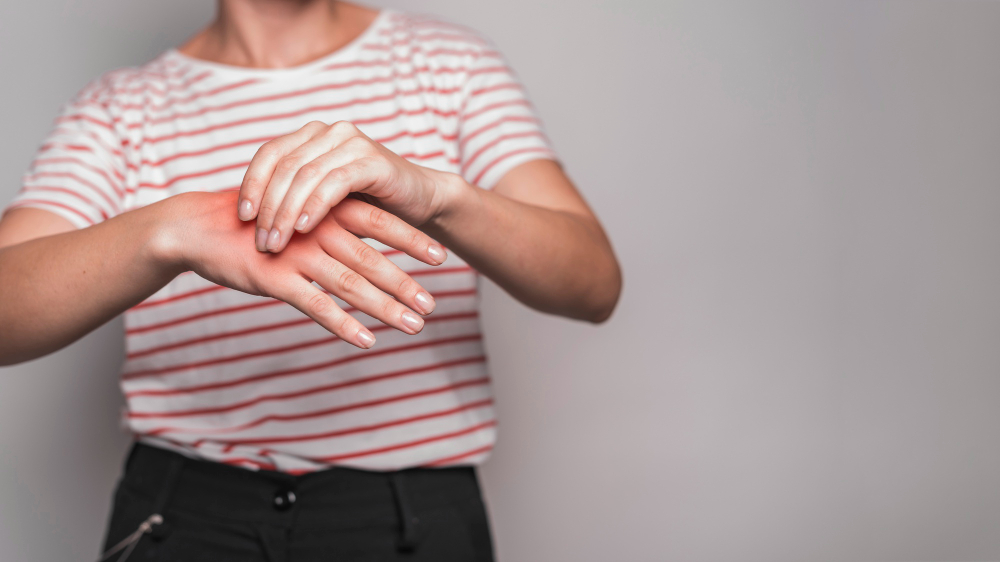
Should a child suffer from heat rash, the primary goal is to offer relief. Keeping the affected areas dry, applying soothing lotions, and letting them stay in cooler places can help. Picture a child getting relief as they sit in a cool bath or when a cool, damp cloth is applied to their skin. Scratching might be tempting but can lead to more complications. If the condition persists, it’s time to visit a healthcare professional. While heat rash is typically benign, the discomfort it causes can be distressing, especially for young children. To manage and treat heat rash effectively:
- Keep the affected area dry: This is fundamental in heat rash management. Ensuring the area remains dry prevents further irritation and allows the skin to heal. Mild talcum or cornstarch powders (ones without fragrances) can help absorb excess moisture.
- Use calamine lotion or over-the-counter hydrocortisone creams for itching: These topical applications can soothe inflammation and reduce itching. However, they should be used as per directions and not overextended areas, especially without a doctor’s recommendation.
- Allow the child to stay in cooler environments: Limiting exposure to heat and humidity can prevent the rash from worsening. An air-conditioned room or a shaded area outdoors can make a significant difference.
- A cool bath or a cool, damp cloth can provide relief: Lukewarm baths with mild soap followed by air drying or gently patting with a soft towel can be beneficial. Adding colloidal oatmeal or baking soda to the bath can further soothe the skin.
- Avoid scratching, as this can cause infections. Keeping a child’s nails trimmed and clean can reduce the risk of introducing bacteria if they scratch. For younger children, mittens or socks over their hands can prevent scratching during sleep.
- Opt for antihistamine creams or oral medications: In severe cases where itching is intense, antihistamines can offer relief. However, they should only be given per a doctor’s recommendation, keeping age and dosage in mind.
- Stay hydrated: Drinking water helps to cool the body from within and facilitates better sweat production and evaporation, reducing the chance of duct blockage.
- Loose cotton clothing: After treating the affected area, dress the child in breathable cotton clothes. This prevents friction on the rash and allows better air circulation.
- Aloe Vera: This natural remedy can be soothing when applied to the skin. However, do a patch test to ensure the child isn’t allergic.
- If symptoms persist or there’s an indication of infection, consult a pediatrician or dermatologist. Signs of infection can include increased pain, swelling, redness, warmth around the rash, pus draining from the lesions, swollen lymph nodes, or a fever.
Consistent monitoring and early intervention can prevent complications and provide much-needed relief to children suffering from heat rash. Always approach any treatment cautiously and prioritize consulting with a healthcare professional for persistent or severe cases.
Conclusion
While the joys of summer are many, the season comes with its challenges, heat rash being one of them. But with a thorough understanding of its causes, signs, and treatments, parents can be well-prepared to tackle this issue head-on. Prevention is the key, but even if a child does develop heat rash, prompt and effective treatment can ensure they’re back to their cheerful, playful selves in no time. So, as you gear up for those beach trips and picnics, armed with this knowledge, you can ensure that your child’s skin remains as radiant as their smiles.

